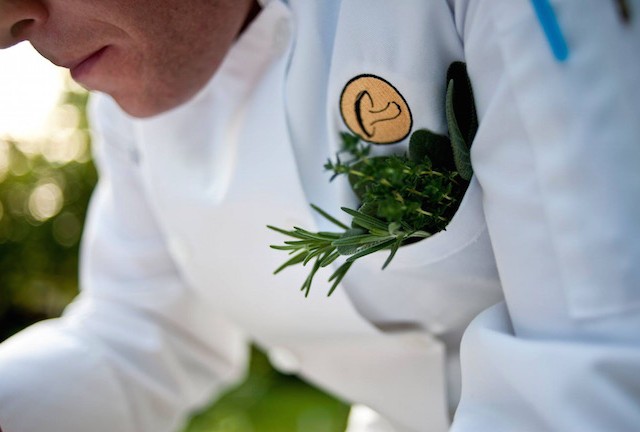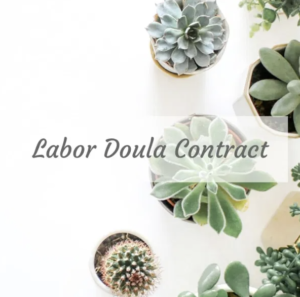Kung Pao Placenta
Posted on:
December 9, 2015 | Doula, Placenta Encapsulation

As a male and a culinary professional spending time in the ProDoula office required a period of adjustment and education.
Words and phrases that would have never come out of my mouth are uttered countless times during the day in this office.
When I first heard the ladies here use terms like breast feeding, placenta and vaginal birth they caused me to instantly blush. Now all of these words are a part of my regular vocabulary and no longer produce that reaction.
As a culinary professional, placenta encapsulation was a very interesting subject for me.
After doing some research and talking to people directly involved in this field, I can honestly say, I am both shocked and horrified, and its not for the reasons you may be thinking.
In the culinary field we have a very strict and rigid set of rules when it comes to food safety.
Those rules stretch all the way from the source of our ingredients, through packing and shipping and into the kitchen where they apply to cooking, handling, storing and serving of food.
Regulations are imposed by the federal and local governments and are upheld and taken to heart by the people in the kitchen making the food.
We want control points and a traceable, clear line to the source of the food. We keep detailed logs of shipments, everything we touch is dated and labeled and temperatures are recorded.
Everything is tracked and there is complete accountability every step of the way.
On the outside chance that something you’ve consumed has been exposed to bacteria, whether it was on the farm, in the packing facility or in the kitchen, it can be identified and traced and the issue can safely be rectified.
Even when I go to cook in a client’s home, not only do I follow these health guidelines but I impose my own as well, to guarantee the safety and peace of mind of my clients.
I pack all of my ingredients in coolers to ensure they stay at a safe temperature during transport, I follow personal hygiene practices, I make sure the equipment I’m using is clean and sanitized (whether its my own personal items or the clients) before I even begin to think about cooking. I make sure everything is cooked to the proper temperature and cooled and stored quickly and efficiently.
In the food service business this is called, Hazard Analysis and Critical Control Points or (HACCP). Defined, this is the management system for food safety as it relates to all aspects of production, acquiring, handling, finishing, distributing and customer consumption.
It is universally accepted and used by all culinary professionals.
As a private chef I would never consider cooking, preparing or storing any ingredients for a client in my own home.
There are two options for the private chef.
- You can utilize a licensed, commercial kitchen to store, prepare and cook.
- You can utilize your client’s kitchen for preparation and cooking.
There is no in between and there are no other options!
Sure, some people just getting into the field, may start baking or making jams or other packaged foods at their homes because it is cheaper than renting space, but its not legal and its not safe.
I personally don’t want to consume anything that was prepared and stored in someone’s home. Commercial kitchens are designed specifically with self closing doors and with food safety in mind.
For me, it is very clear what separates the amateurs from the professionals.
So, you can imagine the shock I felt when I began reading about placenta encapsulation.
There are people out there, that actually take another woman’s placenta to their own home and encapsulate it in their own kitchens!
Whether you view placenta as a nutritional supplement or a food, it should be handled, transported and prepared by a professional with a clearly defined system in place and multiple points of accountability.
I have seen some pretty nasty kitchens and refrigerators in my 10 years as a chef. I can only imagine a placenta in a Ziploc bag sitting in a fridge full of rotting vegetables, spoiled milk and leftover Chinese food. Anything that goes into that fridge no matter how its stored is going to absorb some of those flavors and smells.
Kung Pao Placenta…
Say that out loud a couple of times.
And to be perfectly honest that’s probably the least of your worries.
What if the person doing the job has pets running around their house? What if they don’t have a dishwasher and can’t properly get their tap water to the proper temperature to effectively sanitize their tools? Maybe, they are emptying out their spice rack, to stretch out your final product.
If I was going to have this done for the mother of my children, I can guarantee you, I would be very selective in who I choose to handle this delicate job.
I would want a professional who has a proven system in place to provide us with a safe, doubt free and 100% pure, final product.
There doesn’t seem to be any regulation as far as placenta encapsulation goes, but I can tell you…
Amateur hour, is over.
IF you are thinking about providing this service for your clients, or you are a consumer who is on the fence about it, ask questions, elevate standards and don’t settle for mediocrity.
Stay Hungry,
Chef Joe
